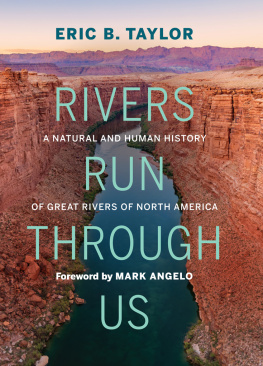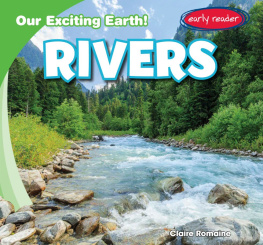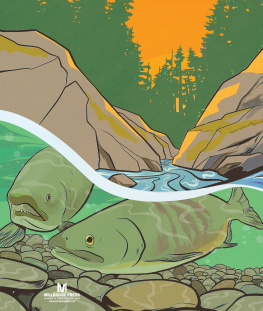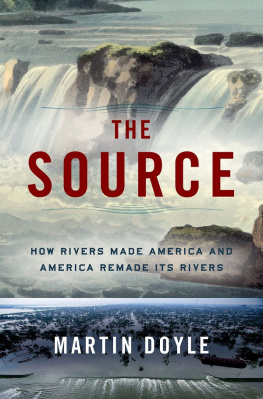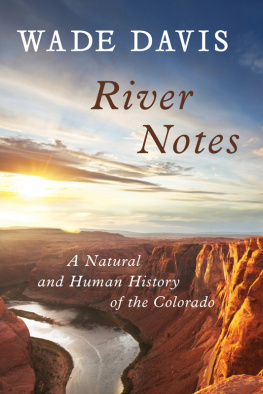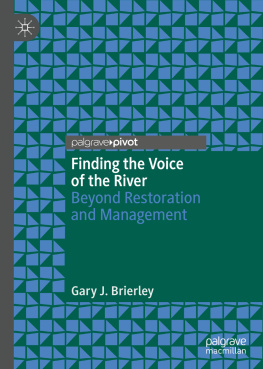Copyright
2021 by Eric B. Taylor
First Edition
For information on purchasing bulk quantities of this book, or to obtain media excerpts or invite the author to speak at an event, please visit rmbooks.com and select the Contact tab.
RMB | Rocky Mountain Books Ltd.
rmbooks.com
@rmbooks
facebook.com/rmbooks
Cataloguing data available from Library and Archives Canada
isbn 9781771605113 (hardcover)
isbn 9781771605120 (electronic)
Edited by Peter Enman
Interior design by Lara Minja, Lime Design
Cover photo iStock.com/benedek
Printed and bound in Canada
We would like to also take this opportunity to acknowledge the traditional territories upon which we live and work. In Calgary, Alberta, we acknowledge the Niitstapi (Blackfoot) and the people of the Treaty 7 region in Southern Alberta, which includes the Siksika, the Piikuni, the Kainai, the Tsuutina, and the Stoney Nakoda First Nations, including Chiniki, Bearpaw, and Wesley First Nations. The City of Calgary is also home to Mtis Nation of Alberta, Region III. In Victoria, British Columbia, we acknowledge the traditional territories of the Lkwungen (Esquimalt and Songhees), Malahat, Pacheedaht, Scianew, TSou-ke, and W SNE (Pauquachin, Tsartlip, Tsawout, Tseycum) peoples.
All rights reserved. No part of this publication may be reproduced, stored in a retrieval system, or transmitted in any form or by any means electronic, mechanical, audio recording, or otherwise without the written permission of the publisher or a photocopying licence from Access Copyright. Permissions and licensing contribute to a secure and vibrant book industry by helping to support writers and publishers through the purchase of authorized editions and excerpts. To obtain an official licence, please visit accesscopyright.ca or call 1-800-893-5777.
We acknowledge the financial support of the Government of Canada through the Canada Book Fund and the Canada Council for the Arts, and of the province of British Columbia through the British Columbia Arts Council and the Book Publishing Tax Credit.

To my memory of my father, Eric Walter Taylor (19202015), who first introduced me to the magic of rivers
CONTENTS
List of Illustrations/images
List of maps
Foreword
Mark Angelo
I HAVE BEEN DRAWN to rivers and streams since I was a child; there was just something about moving water that I found captivating. Growing up in southern California, I would spend hours exploring small creeks in the nearby foothills looking for aquatic insects, crayfish or anything else I might find.
Riveted by rivers, I wasnt very old when I began to appreciate the immense importance of waterways as a global resource. Eventually, I also came to realize that my fascination with rivers was widely shared by many around the world, a phenomenon stemming from the key role rivers have played in human development. The reciprocal relationship that exists between the human experience and rivers is explored in depth by Eric Taylor in Rivers Run Through Us: A Natural and Human History of Great Rivers of North America.
While writing this foreword, I found myself reflecting on some of my early river journeys that were especially impactful. Among these was a trip as a young paddler on the Rio Grande, and I remember so vividly being awestruck by the beauty of the Rio Grande gorge the first time I saw it. Located near Taos, New Mexico, the walls of this narrow river canyon shot up over 200 metres through layers of volcanic basalt while 500-year-old pion and juniper trees dotted the landscape. Hidden among the cliffs, scree slopes and large boulders were ancient pictographs scratched into the black basalt, touchpoints of the Rio Grande Pueblos, the people of the great river.
It was a remarkable stretch of river in every sense, and I could easily appreciate why, to many, this 80-kilometre-long gorge is New Mexicos equivalent to the Grand Canyon.
My journey all those years ago was focused on following the course of the Rio Grande, the second longest river in the continental United States with a length of close to 3000 kilometres.
Upon leaving New Mexico, I drove south to El Paso, Texas, where I spent several more days exploring and paddling other parts of the river. It was a trip I enjoyed immensely, and I came to view many parts of the river as a great oasis amid an otherwise arid landscape. The basin of the Rio Grande comprises a massive area, from its headwaters in south-central Colorado to its terminus in the Gulf of Mexico. Throughout its course, the river plays a vital role in nourishing ecosystems and irrigating agricultural lands in both the United States and Mexico.
In recent years, I returned to El Paso for the first time in over four decades only to find that a stretch of river I had paddled so long ago had completely run dry, an occurrence that has become increasingly frequent due to excessive water withdrawals and climate change. Remembering the river that I had seen so many years before, this was a stunning and sobering sight: a stark reminder that even great rivers can face immense pressures.
In my late teens, I went to the University of Montana, where I got into paddling and fly fishing in a major way. As a student, I also became increasingly fascinated by the natural and human history associated with waterways. During those years, I started paddling nearby rivers like the Blackfoot and Clark Fork (tributaries of the Columbia) and soon developed a passion for travelling by river, both within the continent and elsewhere. I also knew at that point that I wanted to spend my life working to protect and restore rivers.
In the decades since, Ive paddled along many of the worlds large river systems, ranging from the Amazon to the Nile and from the Ganges to the Zambezi. But I equally enjoy exploring the incredible waterways that exist closer to home, and I feel extremely fortunate to have travelled on and along each of the ten rivers so effectively featured in Eric Taylors Rivers Run Through Us.
Over the years, I have come to believe that rivers are the arteries of our planet; they are lifelines in the truest sense. They have immense natural, cultural, recreational and economic value and have been shaped and influenced over time by both natural and human elements. At the same time, rivers help to shape the lives of those who live within their basins. Understanding these relationships is crucial to our efforts to better care for rivers and, through this book, Taylor makes a significant contribution to that endeavour.
I first met Eric Taylor several years ago at a Pacific salmon forum where he made a very impactful and well-received speech about the need to conserve salmon stocks. As a university professor, he has spent his career in and around rivers, and his lengthy experience and extensive knowledge, coupled with a great passion for rivers, makes him perfectly suited to write this book.
One of the most enjoyable aspects of Taylors book is the great diversity of topics he covers from war, to art to salmon all of which relate to rivers. I believe readers will gain great insight, not only about how humans have impacted rivers, but also the extent to which rivers have affected us.
One of the great rivers examined in

